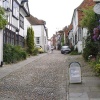 | 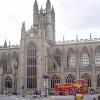 | 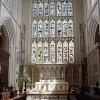 | 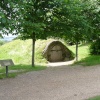 | 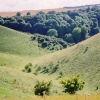 | 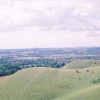 |
| Edward Lever Posts: 734 Joined: 22nd Dec 2005 Location: UK | quotePosted at 18:52 on 7th March 2015 It can be tricky sometimes when responding to forum postings - what is reasonable to one person might be totally bonkers to another. Hence I would never have guessed Rod had an interest in pogo-sticking across red-hot coals from reading his previous erudite comments. Even so, Rod's hobby does not detract from his undoubted photographic skills, and must be OK so long as it doesn't frighten the horses. Which neatly gets back to Robert's original question. I think the answer is firmly YES - a photo can have too much. The aim of the photographer should be to make it immediately obvious what the subject of the photo is. I agree that it is sometimes difficult with landscapes, there might be an interesting building next to a pretty brook with eye-catching clouds in the sky, but the photographer has to somehow convince the viewer of the central interest of the photo, which is presumably what led him or her to take the photo in the first place. Unfortunately this requires critical analysis of one's own efforts. I have often rejected my own images on later review when I have realised that I have been so fascinated by the subject that I have forgotten the lamp-post, wheelie-bin, overhead lines, gurning idiot etc appearing from nowhere. Sometimes such distractions can be cropped later, but I really do try to get it right first time and get annoyed if I don't. I suppose that is all part of the challenge and the fun of photography.
Edited by: Edward Lever at:7th March 2015 19:52 |
| Ron Brind Posts: 19044 Joined: 26th Oct 2003 Location: England | quotePosted at 19:07 on 7th March 2015 Thank you Rod and Edward for your posts here, know that it's appreciated |
| Rod Burkey Posts: 554 Joined: 2nd Sep 2008 Location: UK | quotePosted at 01:14 on 8th March 2015 Photographs represent fleeting moments in time. To be frank, many images leave me cold, but that is me being subjective. When I view a picture, it has to hit me between the eyes with a clear message. Simplicity is the key. Look at the work of the great photographers and you will seldom see countless mundane images all looking very much the same. Landscapes, urban images, portraits, nude studies, all involve shades of light, form and texture. If the composition of these forms is too complex then the message is blurred and lost. That is when technical skill needs to be combined with something resembling artistic ability. A picture needs a clear subject, a reason to make it a pleasure and worth seeing. I know that I will never be a great photographer, but I strive to create technically competent images. I delete a lot, and never show anyone a picture that I am unhappy with. My wife is my sternest critic and provides another way of filtering out the dross. The best pictures do not have too much, and that is the key. I'm getting dizzy on this soap box, so will now climb off, and make sure my quest for that elusive image continues tomorrow. I rather doubt many will read my ramblings anyway. Cheers Ron, I think you will!
|
| Ron Brind Posts: 19044 Joined: 26th Oct 2003 Location: England | quotePosted at 08:34 on 8th March 2015 Yes I have read it Rod, but more importantly you have responded to the person who started the thread (Robert) who as I mentioned previously has suffered a certain 'lack of response' from a few POE members that claim to be interested in photography so thank you for that. Obviously, they think they are having a go at me by not responding where my name shows, well think on dear friends I am made of sterner stuff! Strong and determined doesn't even come near it. The POE forum is a truly great resource and I won't let it be spoiled by a few bigots. |
| Rod Burkey Posts: 554 Joined: 2nd Sep 2008 Location: UK | quotePosted at 08:51 on 8th March 2015 Bigots, idiots? There's one in every ale house. Old Liverpool expression. Why should POE be any different?. Let them show their true pathetic colours. Roll on P O E . how about some more posts on Photography ladies and gentlemen!
|
| Edward Lever Posts: 734 Joined: 22nd Dec 2005 Location: UK | quotePosted at 09:17 on 8th March 2015 I would not consider myself to be an 'Art' photographer, but I agree with Rod that some artistic knowledge needs to be combined with technical expertise. There are many technical tricks which can be used to emphasise the subject. For example, the use of a prime lens set to a wide aperture renders the subject in sharp focus, but blurs the background. This is ideal for portraiture. The whole picture need not be sharp, sometimes all that is needed is sharp focus on the catch-light in the model's eyes. In the days of film (where ISO was rarely higher than 400) and tungsten lighting, portrait photographers were obliged to use fast lenses set to wide aperture, giving the effect I have just described. Nowadays, with the high ISO settings available on digital cameras, and the almost universal use of not-very-fast zoom lenses, it is almost impossible to get that dreamy effect (I think it is called 'bokeh' these days) unless you use a fast (and expensive) prime lens at wide aperture. It is also possible to emphase the subject by using a wide-angle lens and getting in very close. This works well on still-life but is not flattering to human models! The alternative is to use a telephoto lens and get a long way from the subject, which is more flattering for face shots. As with all things, there is nothing new under the sun. I am an ancient relic of the film era of photography, but I do not regret having cut my teeth on film. I am sure Rod would agree. And as for your worries about the forums, Ron, I shouldn't take a lack of response as being anything more than apathy.
|
| Dave John Posts: 22335 Joined: 27th Feb 2011 Location: England | quotePosted at 10:59 on 8th March 2015 Apologies Robert and all for taking so long to get round to this thread but brain has not been in proper gear for a while having been in hospital for quite a serious operation so have only been dabbling in the more lighthearted threads uptil now!
Edited by: Dave John at:8th March 2015 11:04 |
| Rod Burkey Posts: 554 Joined: 2nd Sep 2008 Location: UK | quotePosted at 11:20 on 8th March 2015 I am most certainly not an art photographer. My father was a sculptor and our home had many images of fine landscapes and the human form, which I always think share many features. Looking at art and fine photographs will always show a very clear subject, being a face, or a winding road leading the eye into a mini journey. It reduces confusion. Like Edward, I cut my “gnashers” on film, plus a darkroom. The prime lenses were pretty good with wide maximum apertures that few amateurs have now with zooms. Depth of field was far easier to control and now my favourite lens for easy use of that, is my 50mm f1.4. This really does help control superfluous detail. One thing I really don’t miss is having to use colour film with a blue filter when in a studio to combat the orange light given off by tungsten lights. Nor do I miss the heat those lamps gave off! I’m veering off the topic now, so I’ll go and put some flame retardant on the pogo stick. I’m looking forward to perhaps a few more entries in the “Picture chat” forums. |
| Dave John Posts: 22335 Joined: 27th Feb 2011 Location: England | quotePosted at 11:24 on 8th March 2015 Maybe a case for a new thread Rod, but I do agree with your symapthies for prime lenses. If the image in the frame was not what you wanted you had to use your feet one way or the other. Modern zooms are good but certainly make us a lot lazier |
| Edward Lever Posts: 734 Joined: 22nd Dec 2005 Location: UK | quotePosted at 12:29 on 8th March 2015 On 8th March 2015 11:24, Dave John wrote:
If you want good 'bokeh' to really make the subject stand out from the background, use a good quality prime lens, such as Rod's 50mm f/1.4, and set it at maximum aperture. |